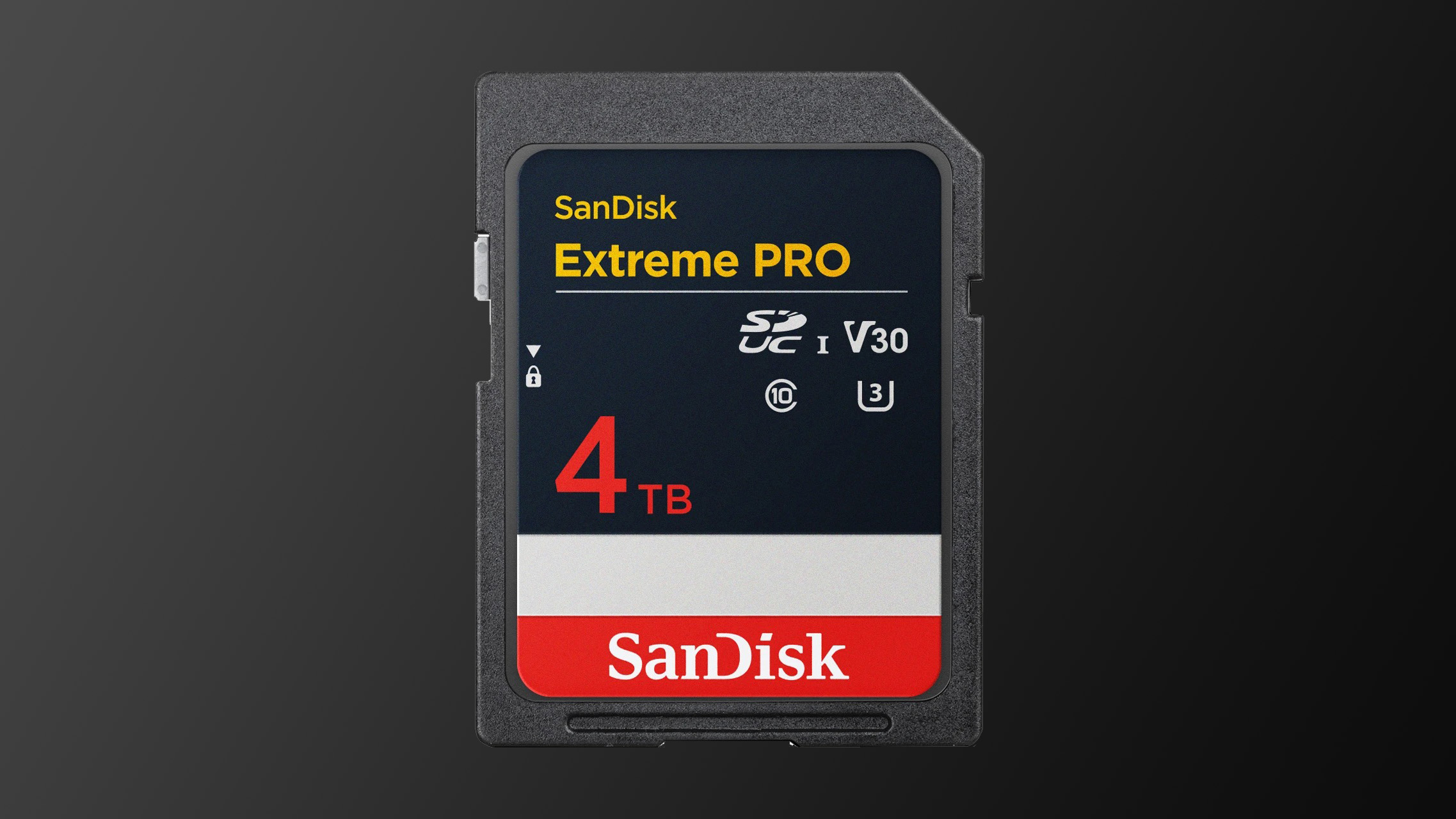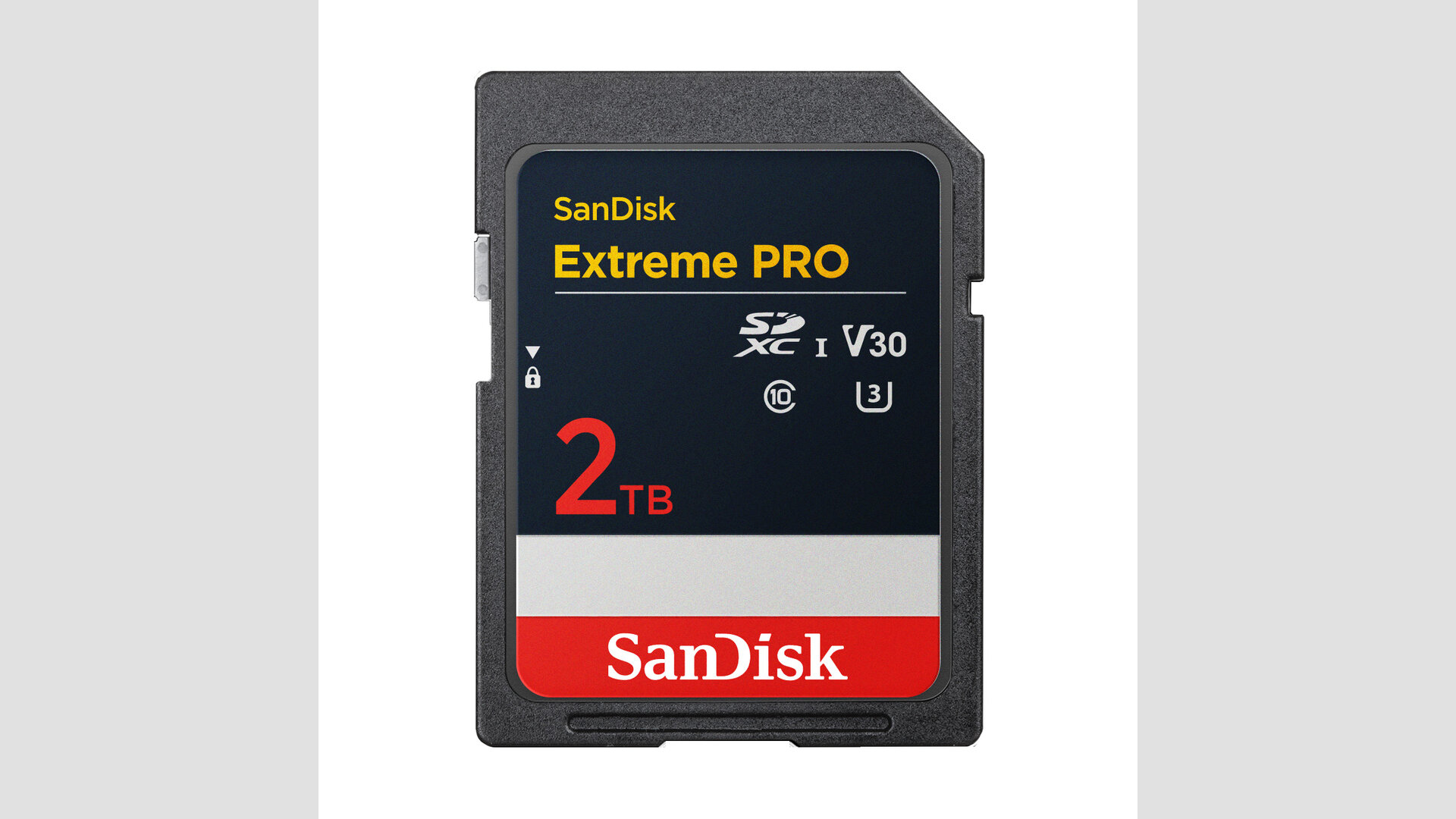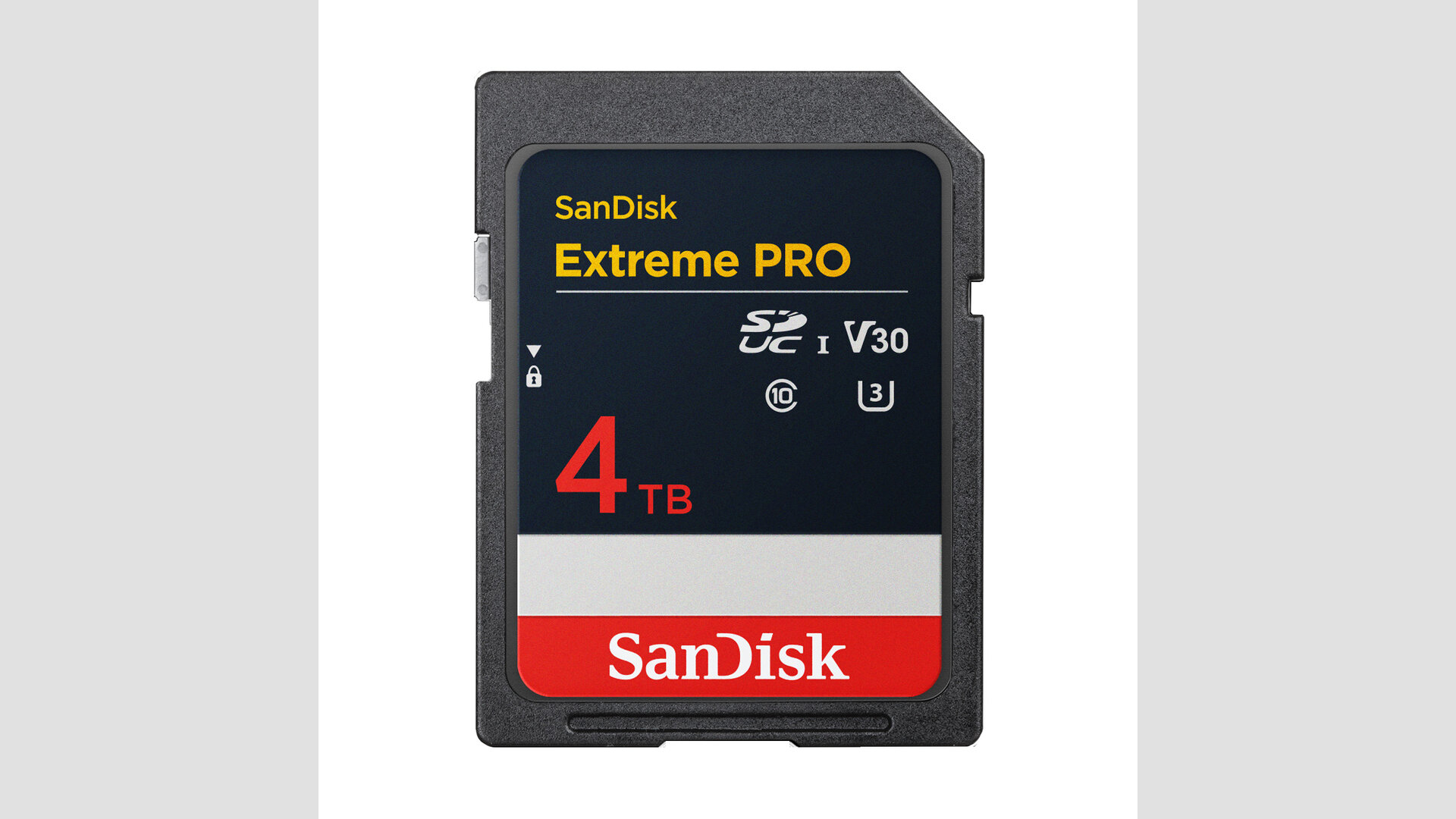Western Digital preps 4TB SD cards for 2025 — SDUC cards big enough to tackle 8K video
SanDisk, a WD-owned brand, breaches 4TB SD cards and even begins reaching SSD-esque speeds

Western Digital showcased three major new SD cards: a 4TB SDUC SD card, a 2TB SDXC SD card, and even a 256 GB SD Express-supported card. Below, we'll examine some finer details, including why SDUC cards are still rare and how SD Express compares.
First, review the 2TB SDXC cards, the SanDisk Extreme Pro V30. The SanDisk Extreme Pro V30 comes in standard and microSD card formats, and this is stated to be the Extreme Pro's debut with 2TB of storage. The world's first 2TB microSD cards were released in January, so this is a brand-first and not a world-first anymore. However, 2TB is not a sufficient storage area to sneeze at— in fact, this officially tops out the range of the SDXC spec by hitting that 2TB target.
According to Western Digital, this SD card's use of UHS-I should make it one of the world's fastest microSD cards designed around these mainstream SDXC specifications for SSDs.
Next, let's look at the SanDisk SD Express (or microSD Express) cards, which join a market where similar SD Express cards already exist. WD's SanDisk SD Express and microSD Express cards look pretty similar to other SD cards, but using a faster PCIe interface can achieve storage read speeds of up to 880 MB/s and storage write speeds of up to ~650 MB/s. Unfortunately, the SD Express cards seem limited to only 256GB— but these speed feats place them somewhere between the best SATA SSDs and many early NVMe Gen 3 SSDs.
These speeds are pretty impressive for SD cards, and if costs get low enough while support continues to improve, the future of upcoming devices like Switch 2, Steam Deck 2, etc., looks just a bit brighter. Since many games are beginning to require SSDs and several pro workloads are better with them, continued improvements to SD card speeds like this bode well for the future.
Finally, look at the crowning jewel: the SanDisk Extreme Pro SDUC V30, which weighs a whopping 4TB capacity. Even by the standards of full-sized drives, that's a lot of storage, and achieving it is finally starting to make good use of the SDUC specs. While SDXC caps out at 2TB anyway, SDUC-supported SD cards could one day get as big as 128TB.
So, while a 2TB SDXC card shows that the limit has been reached, a 4TB SDUC card like this indicates that the absolute limit is one we have yet to go. While these are optimistic looks at the near future of SD cards from Western Digital-owned SanDisk, we do not have any actual pricing or lease date information to share.
Get Tom's Hardware's best news and in-depth reviews, straight to your inbox.
Western Digital's new SDUC cards will be available in 2025. Pricing remains a mystery as the company didn't share many details about the upcoming products.

Christopher Harper has been a successful freelance tech writer specializing in PC hardware and gaming since 2015, and ghostwrote for various B2B clients in High School before that. Outside of work, Christopher is best known to friends and rivals as an active competitive player in various eSports (particularly fighting games and arena shooters) and a purveyor of music ranging from Jimi Hendrix to Killer Mike to the Sonic Adventure 2 soundtrack.
-
newtechldtech yea right , and which card reader can use that speed ? Laptops? none .. Cameras ? none ... even usb card readers are not fast enough for this.Reply
You need to standardize the card reader speed first. -
pjmelect I was disappointed that this article did not explain how the 2TB limit was exceeded on the 4TB cards.Reply -
derekullo Reply
SDXC has a maximum size of 2 terabytes.pjmelect said:I was disappointed that this article did not explain how the 2TB limit was exceeded on the 4TB cards.
SDUC has a maximum size of 128 terabytes.
https://www.sdcard.org/press/thoughtleadership/growing-demand-growing-capacity-an-introduction-to-the-new-sd-ultra-capacity-functionThe SDXC spec was limited to 2TB due to its limited addressing capability – yet market needs like the trend toward 4K/8K, and the NAND technology evolutions, created a need to overcome the SDXC limit, allowing future growth up to the new limit of 128TB.
SDUC is using the exFAT file system, which is the same file system as SDXC. However, SDXC is formatted with the Master Boot Record (MBR) format. MBR format has a capacity limitation up to 2TB. SDUC is formatted with GUID Partition Table (GPT) format, which can support capacity more than 2TB.
I was under the impression that you could format an sd card to any file system you like ... zfs, but the camera/phone is probably expecting exFAT if it is obeying the standard which it is probably required to do.
Having said that if they ever do release a 128 terabyte card their Express read/write of 985 MB/s is wholly inadequate!
128TB / 985 MB/s = 36 hour 5 minute 49 second transfer !!! -
pjmelect New SD card formatI have read the above link and I think that I understand what they have done to get over the 2TB limit. They have changed the addressing on the SD card from 32bits to 64bit giving effectively unlimited size 2^64 x512 bytes which is 2.47 e173 bytes. The SD card is supplied with the EXFAT format, but could be formatted with NTFS if your device supports it as EXFAT is royalty free. I don't understand the 128TB limit as EXFAT suports drives up to 256TB. If SD cards continue increasing in size at the current rate this will become important in around ten years.Reply -
usertests Reply
If you mean how they fit so much NAND in there, it shouldn't be too hard. There are allegedly 1.5 TB and 2 TB microSD cards on the market, and a full SD card is several times larger than that.pjmelect said:I was disappointed that this article did not explain how the 2TB limit was exceeded on the 4TB cards.
But these SDUC cards are compatible with almost 0% of devices and the devices that would tend to support this are likely switching to CFexpress. -
WeiSheiLindon Reply
It's important to remember where we started. When we first got the SD XC standard, not only were the first cards not nearly the full limitations on capacity of the standard, they also were quite a bit slower than the theoretical limit of UHS-I.derekullo said:SDXC has a maximum size of 2 terabytes.
SDUC has a maximum size of 128 terabytes.
https://www.sdcard.org/press/thoughtleadership/growing-demand-growing-capacity-an-introduction-to-the-new-sd-ultra-capacity-functionThe SDXC spec was limited to 2TB due to its limited addressing capability – yet market needs like the trend toward 4K/8K, and the NAND technology evolutions, created a need to overcome the SDXC limit, allowing future growth up to the new limit of 128TB.
SDUC is using the exFAT file system, which is the same file system as SDXC. However, SDXC is formatted with the Master Boot Record (MBR) format. MBR format has a capacity limitation up to 2TB. SDUC is formatted with GUID Partition Table (GPT) format, which can support capacity more than 2TB.
I was under the impression that you could format an sd card to any file system you like ... zfs, but the camera/phone is probably expecting exFAT if it is obeying the standard which it is probably required to do.
Having said that if they ever do release a 128 terabyte card their Express read/write of 985 MB/s is wholly inadequate!
128TB / 985 MB/s = 36 hour 5 minute 49 second transfer !!!
"Toshiba's card will be able to write data at 35MBps and read it at 60MBps. By comparison, the 333x standard used in the fastest CF cards allows for a write speed of 40MBps and a read speed of 50MBps."
https://www.zdnet.com/article/toshiba-to-launch-first-64gb-sdxc-card/
The same applies to faster standards. While it's true that often standards such as UHS-II are developed as a necessary advancement to connect faster and faster NAND to a host device, and as such the first cards to come out often approach the theoretical limit of the spec, in the case of SD express, the standard has been developed in anticipation for the ever innovating SD card market. Most assuredly, once 985MB/s becomes a bare minimum for things such as camera SD cards, the SD association will develop and announce SD Express 2.0, similar to the logical step from PCIE 3.0 x4 to PCIE 4.0 x4 for m.2 SSDs. This will happen long long before 128TB SD Cards are even partially realistic.


